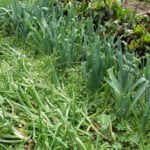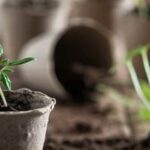Vegetable gardening in small spaces has become increasingly popular in recent years, as more people embrace the idea of growing their own food even with limited areas such as apartments or small yards. The benefits of cultivating vegetables in confined spaces are numerous, making it a great idea for anyone looking to enjoy fresh produce and connect more closely with nature.
One of the key advantages of small-space vegetable gardening is its accessibility. With limited areas, it becomes easier to manage and maintain a garden, especially for those who are new to gardening or have busy lifestyles. Additionally, growing vegetables in small spaces allows individuals to have control over the quality and safety of their food, reducing reliance on store-bought produce that may be treated with chemicals.
Choosing the right vegetables for small-space gardening is crucial for success. Opting for low-maintenance varieties that are suitable for confined spaces helps ensure a rewarding experience. Compact or dwarf varieties are particularly recommended as they take up less space while still producing abundant harvests.
Furthermore, vegetables that thrive well in containers or vertical gardens offer opportunities to maximize limited space effectively. By carefully selecting the right plants, even the smallest balcony or patio can become a flourishing vegetable garden.
Choosing the Right Vegetables for Small-Space Gardening
When it comes to small-space gardening, choosing the right vegetables is crucial for a successful and productive harvest. Limited areas, such as apartment balconies or small yards, require low-maintenance vegetables that can thrive in confined spaces. It is also important to select compact or dwarf varieties that do not take up much space and can be easily grown in containers or vertical gardens.
One of the key factors to consider when choosing vegetables for small-space gardening is their growth habit. Look for plants that have a compact or trailing growth habit, as they are more suitable for limited spaces. Examples of such vegetables include cherry tomatoes, bush beans, baby carrots, and dwarf varieties of peppers or eggplants. These vegetables tend to have smaller leaves and shorter stems, allowing them to be efficiently grown in containers or hanging baskets.
Another consideration is the amount of sunlight available in your small-space garden. Most vegetable plants require at least 6 hours of direct sunlight per day to grow well and produce a good yield. However, if you have a shady area, there are still options available. Leafy green vegetables like lettuce, spinach, and kale can tolerate partial shade and can be harvested throughout the season.
| Vegetable | Growth Habit | Sunlight Requirements |
|---|---|---|
| Cherry tomatoes | Compact | Full sun (6-8 hours) |
| Bush beans | Upright Compact | Full sun (6-8 hours) |
| Baby carrots | Compact | Full sun/partial shade (4-6 hours) |
| Dwarf peppers | Compact | Full sun (6-8 hours) |
| Dwarf eggplants | Compact | Full sun (6-8 hours) |
By choosing the right vegetables that are suitable for small-space gardening, you can maximize your growing area and enjoy a bountiful harvest even in limited spaces. Remember to also consider your own personal preferences and the vegetables that you enjoy eating. With careful selection and proper care, small-space gardening can provide you with an abundance of fresh and homegrown produce.
Essential Tools and Supplies for Small-Space Vegetable Gardening
One of the key factors in successful small-space vegetable gardening is having the right tools and supplies. While traditional gardening tools can still be useful, there are some specific tools and supplies that are particularly beneficial for small-scale gardening.
First and foremost, a good set of hand tools is essential for maintaining a small-space vegetable garden. These include a trowel, pruning shears, hand cultivator, and a weeding tool. These tools help with tasks such as planting seeds or seedlings, pruning excess growth, loosening soil, and removing weeds.
In addition to hand tools, there are also space-saving supplies that can make small-space vegetable gardening more efficient. Vertical planters are a great option for maximizing vertical space. These planters allow you to grow vegetables on walls or fences, making use of otherwise unused areas. Hanging baskets are another useful tool for small spaces as they can be hung from hooks or brackets to add more growing space.
Trellises are also worth considering for small-space gardening, especially for vine crops such as tomatoes or cucumbers. They provide support for plants to grow vertically instead of sprawling on the ground, saving valuable ground space.
Moreover, it’s important to have quality potting mix specifically formulated for container gardening when growing vegetables in limited areas. Potting mixes provide proper drainage and nutrients needed by the plants. Look for mixes that contain ingredients like perlite or vermiculite to improve drainage and organic matter like compost or peat moss to provide nutrients.
| Tools | Supplies |
|---|---|
| Trowel | Vertical Planters |
| Pruning Shears | Hanging Baskets |
| Hand Cultivator | Trellises |
| Weeding Tool | Potting Mix |
Having the right tools and supplies not only makes small-space vegetable gardening easier but also more enjoyable. They contribute to efficient garden maintenance, maximize available space, and provide the necessary conditions for productive vegetable growth.
Planning and Designing Your Small-Space Vegetable Garden
Assessing Available Space and Sunlight Conditions
Before starting your small-space vegetable garden, it is important to assess the available space and sunlight conditions in order to make the best use of your area. Take some time to observe how much direct sunlight your space receives throughout the day. Most vegetable plants require at least 6 hours of direct sunlight daily, so choose a spot that gets ample sun exposure.
In terms of available space, consider the dimensions and layout of your small area. Measure the dimensions of your gardening space and create a simple sketch or layout plan. This will help you determine how many plants you can realistically grow and allow you to optimize the use of your limited area. Keep in mind that if gardening in containers or vertical spaces, you may have multiple layers or tiers for planting.
Maximizing Gardening Area with Vertical or Hanging Spaces
One great way to maximize your gardening area in small spaces is by utilizing vertical or hanging spaces. Vertical gardening involves growing plants on trellises, fences, walls, or other structures that take advantage of height rather than width. There are various options available such as vertical planters, pocket planters, or even repurposed materials like pallets.
Hanging baskets are another excellent option for small-space vegetable gardens. They can be used to grow herbs, lettuce, trailing cherry tomatoes species like Tumblers or Trailing Tom Thumb tomatoes. Hanging baskets not only save valuable ground space but also add visual interest and attractiveness to your garden.
Remember to provide sufficient support for your plants when utilizing vertical or hanging spaces. Secure trellises firmly into the ground or against solid surfaces if necessary. Ensure that hanging baskets are hung from stable supports capable of holding the weight of soil and water.
Creative Design Techniques for Small-Space Vegetable Gardens
When it comes to designing your small-space vegetable garden, creativity is key. Consider incorporating design elements such as raised beds or container gardens for easy access and organization. Raised beds not only provide better drainage but also create designated spaces for individual vegetables, making it easier to manage your garden.
To add visual appeal, mix different vegetable varieties with contrasting colors and textures. Play around with different plant heights and groupings to create an aesthetically pleasing display. Companion planting is another design technique to consider, where compatible plants are grown together to maximize space and deter pests.
Additionally, don’t be afraid to get creative with container choices. Repurposed items like old buckets, barrels, or even wooden crates can make unique containers that add character to your small-space garden. Just ensure that any containers have proper drainage holes and are large enough for the vegetables’ root systems.
By carefully planning and designing your small-space vegetable garden, you can optimize your available area and create an attractive and productive space in which to grow your own fresh produce.
Soil and Fertilization Techniques for Small-Space Gardens
When it comes to gardening in small spaces, having the right soil and implementing proper fertilization techniques is essential for the success of your vegetable garden. The limited space in small gardens means that every inch of soil needs to be nutrient-rich and fertile.
In this section, we will discuss the importance of soil quality in small-space gardening, explore different types of potting mixes, their benefits, and applications, as well as share organic fertilization methods suitable for small-scale gardening.
Soil Quality:
In a small-space garden, the quality of soil plays a crucial role in determining the health and productivity of your plants. It is important to choose a good potting mix that provides adequate drainage while retaining moisture. Look for potting mixes specifically tailored for container gardening or vegetables, as they are usually lightweight, well-draining, and have added nutrients.
Potting Mixes:
There are several different types of potting mixes available on the market. These include traditional mixes composed of peat moss, perlite or vermiculite, and compost. These mixes are light-weight and provide good drainage but may require additional fertilization throughout the growing season. Alternatively, you can choose from specialized blends such as those with added coconut coir or pine bark fines for better water retention.
Fertilization Methods:
Organic fertilizers are ideal for small-space gardens as they nourish plants without harmful chemicals. Compost is an excellent natural fertilizer option that adds beneficial microorganisms to the soil while improving its structure and fertility. Other organic options include manure tea or fish emulsion which can be diluted in water to provide nutrients to your plants gradually.
By ensuring your small-space garden has high-quality soil and using organic fertilization methods, you will create an optimal growing environment for your vegetables to thrive. The next section will focus on watering and irrigation strategies in limited areas to further enhance the success of your small-space vegetable garden.
Watering and Irrigation Strategies in Limited Areas
One of the most critical factors for successful vegetable gardening in small spaces is proper watering and irrigation. Limited areas can quickly dry out or become waterlogged, making it essential to adopt efficient strategies to ensure the health and productivity of your plants. This section will explore the significance of water conservation in small-space vegetable gardening and present different watering methods to help you maintain optimal soil moisture levels.
The Significance of Water Conservation
In small-space vegetable gardens, every drop of water counts. Conserving water not only helps the environment but also reduces your water bill. Moreover, efficient irrigation practices can prevent overwatering, which can lead to root rot and fungal diseases while minimizing weed growth.
Different Watering Methods
There are several effective watering methods suitable for limited areas:
- Drip Irrigation: This method delivers a slow, steady flow of water directly to the plant’s root zone, reducing evaporation and ensuring that each plant receives adequate moisture. Drip irrigation systems are easy to install and can be customized to fit any garden layout.
- Self-Watering Containers: These containers have built-in reservoirs that provide a constant source of moisture to the plant’s roots. They are ideal for small-space gardens as they reduce the frequency of manual watering while optimizing water usage.
- Hand Watering: For those without access to irrigation systems or containers with self-watering capabilities, hand watering is still a viable option. Use a hose with a nozzle attachment or a watering can with a spout that allows for precise targeting around the plants’ bases.
Tips for Monitoring Soil Moisture Levels
Maintaining proper soil moisture levels is crucial for healthy plant growth. Here are some tips to help you ensure your plants receive adequate hydration without overwatering:
- Monitor soil moisture regularly by testing it with your finger or using a moisture meter. Aim for moist, but not waterlogged, soil.
- Adjust watering frequency and duration based on weather conditions. During hot and dry periods, plants may require more frequent watering, while cooler and wetter weather may necessitate less watering.
- Consider installing a rainwater harvesting system to collect rainwater for your garden. It is an eco-friendly way to supplement your irrigation needs without relying solely on tap water.
By implementing these watering and irrigation strategies in your small-space vegetable garden, you can provide optimal growing conditions for your plants while conserving precious water resources. With a thoughtful approach to watering, your vegetables will thrive and reward you with a bountiful harvest.
Pest and Disease Management for Small-Space Vegetable Gardens
Pest and disease management is an essential aspect of successful small-space vegetable gardening. Despite the limited space, these gardens are still susceptible to a range of pests and diseases. By being proactive and taking the necessary steps to prevent and manage these issues, gardeners can ensure the health and productivity of their plants.
One of the first steps in pest and disease management is identifying common culprits that may affect small-space vegetable gardens. Some common pests include aphids, caterpillars, slugs/snails, and spider mites. Diseases like powdery mildew, blight, and root rot are also prevalent. It’s important for gardeners to be familiar with the signs and symptoms of these pests and diseases so they can take timely action.
For those practicing organic gardening methods, there are several natural approaches to pest control that can be utilized in small-space vegetable gardens. Biological control involves introducing beneficial insects or organisms that prey on or parasitize harmful pests. Ladybugs for aphid control or nematodes for soil-borne insect control are examples of this approach.
Companion planting is another effective strategy for managing pests in a small-space garden. Certain plants naturally repel pests or attract beneficial insects that deter them. For example, marigolds can repel aphids, while planting dill or fennel can attract beneficial wasps that attack caterpillars.
Early detection is crucial in preventing the spread of pests or diseases in small-space vegetable gardens. Regularly inspecting plants for signs of infestation or illness allows gardeners to intervene promptly. Removing or isolating affected plants can help contain the problem before it spreads further.
Additionally, practicing good cultural practices such as proper spacing between plants, adequate air circulation, and regular cleaning of garden tools can prevent the buildup of pests and diseases.
By being proactive in pest and disease management, small-space vegetable gardeners can maintain healthy plants and a productive garden. The use of organic methods and early detection techniques ensures that these gardens thrive in spite of their limited space. With careful attention to pest control, gardeners can enjoy the fruits of their labor and the satisfaction that comes with a bountiful harvest from their small-space vegetable gardens.
Harvesting and Enjoying Homegrown Vegetables
In conclusion, vegetable gardening in small spaces offers numerous benefits and opportunities for individuals looking to grow their own food. Despite the limited area, small-space gardens can be productive and rewarding. By carefully selecting the right vegetables and utilizing creative design techniques, even those living in apartments or with small yards can enjoy the satisfaction of harvesting homegrown produce.
One of the most fulfilling aspects of small-space gardening is the joy of harvesting fresh vegetables from your garden. There is something incredibly satisfying about being able to step outside your door and pick fresh greens for a salad or pluck ripe tomatoes off the vine for a sandwich. The taste and quality of homegrown vegetables far surpass those bought from a store, making every bite truly enjoyable.
Additionally, growing your own vegetables in limited spaces promotes self-sufficiency and reduces reliance on store-bought produce. By utilizing space-saving techniques such as vertical planters or hanging baskets, you can maximize your gardening area and increase your yield. This not only saves money but also allows you to have control over what you grow, ensuring that you have access to fresh, organic produce throughout the growing season.
Frequently Asked Questions
What vegetables can you grow in small spaces?
There are quite a few vegetables that can be successfully grown in small spaces, making them ideal choices for gardeners with limited space. One popular option is salad greens, such as lettuce, spinach, and arugula. These leafy greens do not require much space to grow and can even thrive in containers or small raised beds.
Other vegetables that can be grown in small spaces include radishes, green beans, and cherry tomatoes. These plants are compact and perfect for growing in small gardens, balconies, or even windowsills.
How do you grow a vegetable garden in limited space?
Growing a vegetable garden in limited space requires careful planning and creative techniques. One effective method is vertical gardening, which involves growing plants vertically instead of horizontally to maximize space utilization. By using trellises or stakes to support vining plants like cucumbers or peas, you can save valuable ground space.
Additionally, utilizing containers or raised beds allows for better control over soil quality and drainage while taking up minimal space. Another strategy is succession planting, where you stagger the planting of different crops throughout the season to ensure a steady supply of fresh vegetables.
What leafy vegetable needs only a small space to grow?
A leafy vegetable that needs only a small space to grow is Swiss chard (Beta vulgaris var.cicla). Swiss chard is an excellent choice for gardeners with limited space because it has a high yield potential while requiring minimal room to grow compared to other leafy greens. This vegetable forms large rosettes composed of vibrant green leaves supported by colorful stems in shades of red, yellow, or white.
Swiss chard thrives in both containers and garden beds and can tolerate partial shade as well as various soil conditions. Its compact size makes it a versatile choice for small gardens or even windowsill gardens where sunlight may be limited.

If you’re looking to get into vegetable gardening, or are just looking for some tips on how to make your current garden better, then you’ve come to the right place! My name is Ethel and I have been gardening for years. In this blog, I’m going to share with you some of my best tips on how to create a successful vegetable garden.





